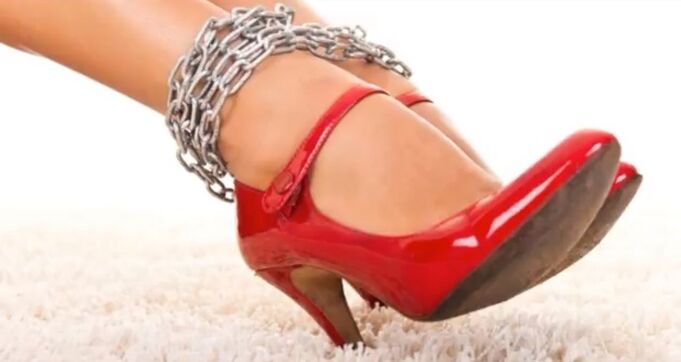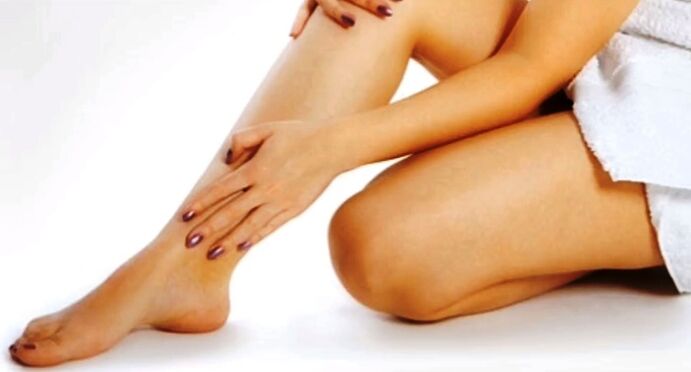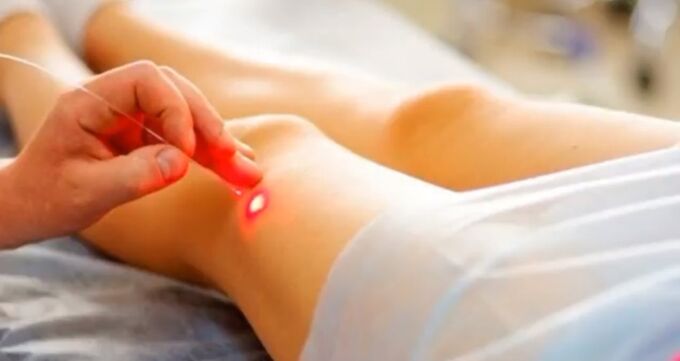Varicose veins or varicose veins is a pathological process that many people experience. In most cases, the disease affects the blood vessels of the legs, leading to their elongation, deformation, and thinning of the vessel walls. In addition, the valves located inside the veins do not fully perform their functions, which disrupts the whole body circulation process and the blood becomes stagnant in the veins.
Under the influence of the described factors, vessels increase in size, appear on the surface, manifest through the skin. As a result, an entire network of blood vessels is visible on the surface of the skin, often with nodules and trophic ulcers. However, beyond the cosmetic disturbances, the problem is much deeper and very often accompanied by feelings of pain.
The nature of pain in varicose veins
First of all, it should be understood that the term "very often" does not mean that pain accompanies 100% of cases of varicose veins. Much depends on a number of factors, the individual characteristics of the patient's body, and even at a later stage in the progression of the pathological process, pain may not be possible.
If we were to classify painful sensations, we would first consider their localization:
- In most cases, pain syndromes are localized directly at the site of damage to the blood vessels, their deformity.
- Second in frequency of localization was the gastrocnemius muscle region, while the pain itself was localized closer to the skin of the legs.
- Lowest probability of pain syndrome going to the ankle area.

Of course, the likelihood of pain in the legs increases as the pathological process progresses. This is due to the exacerbation of the blood vessels, their proliferation, the progression of stagnant processes and, as a result, an increase in vascular pressure. Eventually, the pressure can become so high that the vessel wall becomes unbearable, which threatens internal bleeding, hematoma formation, and trophic ulcers.
Accordingly, the nature of the pain depends on the degree of development of the disease:
- In the early stages, pain or discomfort when being pulled or squeezed is due to swelling of the leg. It's important to understand that along with blood flow disturbances, fluid gets trapped in the legs, leading to swelling. In the early stages, edema is cyclical in nature, usually occurring more in the evening, and discomfort is caused by fatigue, wearing shoes during the day, in severe cases due to skin tightening.
- The reality of fatigue deserves special attention. When you have varicose veins, your legs get tired faster. Initially, this manifestation occurs when exertion lasts a day (if the patient stands for a long time, walks a lot. . . ). However, as the disease progresses, the feeling of fatigue makes itself felt more often and more intensely, so a characteristic painful sensation is felt. In this case, the pain is dull in nature, can be pulling or aching.
- Around the second stage of the disease, with worsening of the veins, more severe deformity and moderate valve dysfunction, the patient complains of the effect of the degree ofserious. In this case, the attacks are characterized as flare-ups, in some cases they are even called acute. This is due to the increased pressure in the pulse, and if you can just lie down and put your feet up on the hill at first to ease the pain, in the future you will have to deal with them with medication.
- The most likely is the development of a pain syndrome, as well as its increased intensity in the case of varicose veins progressing to the final, fourth stage. It is at this stage that vessel wall deformation and wall pressure reach its peak.
It is difficult to describe more precisely the characteristics of pain when varicose veins in the legs. This is due to the unique characteristics of each patient's location, as well as the characteristics of the course of the disease. However, you may feel pain such as:
- Stupid.
- Dragging.
- Hurting.
- Boom.
- Compression.
- Sharp.
- Same with rezi.
In addition, in the second stage, and even more often in the third stage of the development of the pathology, pains are accompanied by muscle cramps, which bother the patient mainly during a night's sleep.

The cause of the feeling of pain
Understanding the cause of varicose veins pain can help you deal more effectively with the problem or prevent pain from occurring. So, pain appears under the influence of the following reasons:
- Pathological changes in the walls of the vessels slow down the circulation of blood in some areas of the veins. This results in decreased blood flow, thus initiating a lack of oxygen, and pain occurs.
- The circulation of blood promotes the elimination of waste products out of the body continuously in a small amount. Due to the reduced blood output and its stagnation, the decay products are slowly eliminated, leading to the appearance of toxins that poison living cells, which also causes pain. pain.
- Also contributing to the occurrence of pain are nutritional disorders that appear in the final stages of the development of varicose veins and with the progression of the disease only increase, causing acute attacks of pain. and more.
The pain increases with exertion, leg fatigue, in most cases they become especially intense in the afternoon or evening.
Methods of dealing with illness
To completely eliminate pain, it is necessary to direct all forces on the treatment of the pathological process. To do this, you need to consult with the doctor who will make the diagnosis, on the basis of which the doctor will prescribe the most suitable treatment for each specific patient.
The treatment will take a certain amount of time, during which time the patient will suffer from severe pain. Therefore, it is important not only to understand how to deal with varicose veins, but also to know the methods of pain relief.
First aid in the fight against pain
Getting rid of pain is only part of the symptoms of treatment, in most cases it does not affect the solution of the main problem - varicose veins.
However, it is very important to get rid of the pain, let's look at the main methods of dealing with discomfort and pain:
- In the early stages of the development of the disease, the pain is unstable, quite low intensity and occurs mainly in the evening. In such cases, simply lying on your side and resting your feet on a pillow or simply leaning against a wall with your feet higher than your body is enough. This pose facilitates blood circulation, thereby helping to reduce swelling and pain.
- Light massage, massaging the lower extremities with massage movements is also very helpful. Remember that you can stretch your legs during the day, which is very helpful in the later stages of the disease.

Traditional pain relief methods
In case of constant severe pain that bothers you, as well as in the case of not being able to massage or relax on your own, you should seek the help of medication. Of course, only a doctor should prescribe the drug, but in most cases the following drugs are used:
- Special means in the form of a gel - mainly we are talking about non-steroidal anti-inflammatory drugs (NSAIDs) that have an effective analgesic effect, as well as have a pronounced anti-inflammatory effect and moderate fever.
- In some cases, you can resort to pain relievers, but with varicose veins, their effects are insignificant and are short-lived. This is mainly an analgesic and antispasmodic.
- If pain accompanies or is aggravated by a seizure, you should talk to your doctor about using a muscle relaxant, which helps relieve muscle spasms.
- Additionally, traditional methods of dealing with the painful sensations of varicose veins include wearing special compression stockings, stockings, or tights. This method is considered the most effective in terms of pain relief, and its effects are the longest. You should only buy the underwear mentioned in pharmacies and since it has different degrees of compression, consult your doctor first.
Folk methods of treatment
In folk medicine, there are also ways to eliminate or prevent pain caused by the development of varicose veins. Consider some of the most effective methods and recipes:
- Horse chestnut - an alcoholic tincture must be prepared from the fruit of this plant. To make, grind 100 grams of peeled chestnuts, place in a glass dish and pour 500 ml of vodka in. Place the barrel in a dark place and leave for 7-8 days at room temperature, stirring once a day. Then, strain the alcohol and massage your feet before going to bed or even during the day if the soreness is during the day.
- Products based on beeswax or propolis show great effectiveness in the fight against pain with varicose veins. To prepare the drug, take 80-90 grams of propolis, grind it into small pieces, and then pour 300 ml of medical alcohol into a glass jar. The agent is infused for 30 days or until the propolis is completely dissolved, all this time it is also kept in a dark place, periodically shaking. When the medicine is ready, you can massage your feet or apply lotion.
Prevention of pain
It should also be understood that in the early stages of the disease, when the pain is not severe or rarely bothersome, but treatment has already been started, it is enough to simply follow the recommendations to reduce the likelihood of painful sensations occurring. :
- Avoid wearing high heels.
- Make sure your shoes are comfortable.
- In the cold season, when working indoors, it is important to change from boots to lighter and more comfortable shoes.
- Try to minimize the stress on your feet.
- Unable to maintain a static position for a long time. If you stand a lot, try to sit more, but if you sit a lot, it's important to periodically walk or at least warm up.
- During the day, try to massage the lower extremities, 5 minutes of light massage will protect you from the pain of the day.
- It is also important that you have a healthy lifestyle, start doing light exercise, eat right, give up bad habits, etc. v.












































